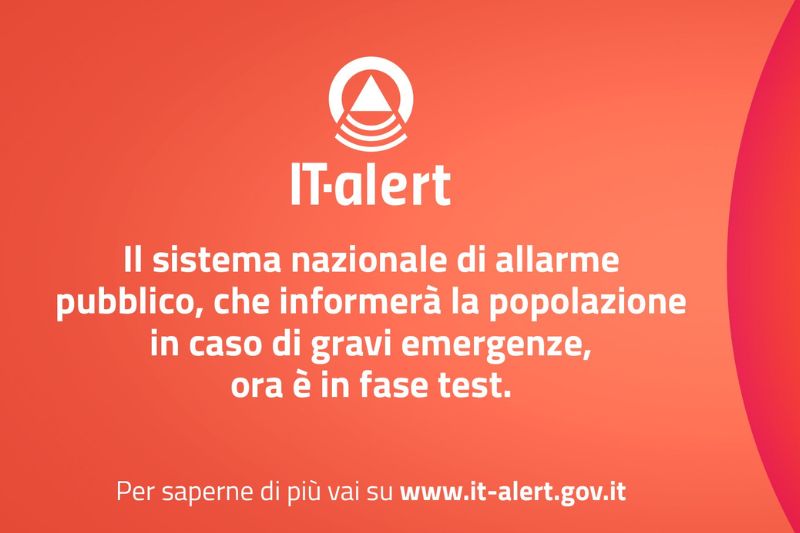IT-alert: the tests in the territories are underway
From 28 June to 10 July, the areas of Tuscany, Sardinia, Sicily, Calabria and Emilia-Romagna will be involved

The test activities of IT-alert, the new national public alert system that Italy is adopting to provide direct information to the population in case of upcoming or ongoing major emergencies, will start on Wednesday 28 June 2023, with the Tuscany region and the adjacent areas involved.
IT-alert is currently being tested; once operational, it will allow anyone in the area affected by the disaster to receive information on the actual or potentially dangerous situation, provided that the mobile phone is switched on and connected to the local network.
Thanks to the work of the Civil Protection Department, the Regions and Autonomous Provinces, together with and ANCI, by the end of 2023 tests will be carried out in all the Regions and the Autonomous Provinces of Bolzano and Trento with the aim of raising awareness of the new system, verifying its functioning in relation to the different types of mobile phone and operating systems, and gathering information from users to implement the service.
The calendar of dates currently scheduled after the 28 June activity in Tuscany is:
- 30 June in Sardinia;
- 5 July in Sicily;
- 7 July in Calabria;
- 10 July in Emilia-Romagna.
At the end of the test, currently scheduled until February 2024, the public alert system will integrate the information and communication tools already provided to reach the population: IT-alert does not replace other emergency information tools, even and especially at the local level, but rather complements them, because an inclusive communication aimed at everyone can only be a multi-channel communication.
IT-alert relies on cell-broadcast technology, which allows sending messages to a group of geographically close phone cells, able to define an area as close as possible to that affected by the emergency. Cell-broadcast works also in cases of limited signal or saturation of the telephone band and has no effect on privacy settings.
Several limitations of cell-broadcast technology must be taken into account: it is possible that a message addressed to an area may also reach users outside that area (overshooting) or that, the message could not be delivered in areas of poor signal coverage. In addition, devices do not receive IT-alert messages if they are switched off or have no signal and may not ring if the ring tone is set on mute. In some cases, users with an old version of the operating system may have problems in the reception of IT-alert messages.